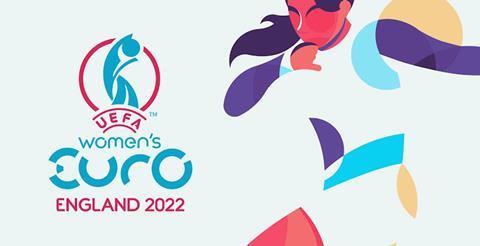Shauna Moran, senior trends analyst at GWI explains why she believes there isn’t the same commotion over the Women’s Euro as the men’s

The Women’s Euros are on course to smash previous records for viewership and fan engagement, with attendance numbers for the opening match already reaching new heights. We’ve come a long way, but the female competition still lags miles behind the male equivalent. In fact, 36% of European sports fans say they follow or watch the men’s Euros, compared to 11% who engage with the women’s competition.
Whilst there isn’t the same commotion over the Women’s Euros as the men’s, recent GWI data shows a rise in the number of people taking an interest in women’s sport since 2020 – a shift that’s particularly prevalent in the UK (+10%), Australia (+7%) and Brazil (+4%). This is echoed by record viewership figures for women’s sport in the UK over the first three months of 2022, with average viewing time nearly tripling.
GWI Sports data adds more context to this. Since the end of 2020, more UK fans say they find female sport exciting to watch (+24%) and that they follow female players or teams on social media (+45%). Half of sport fans here also think women’s sport should get more funding or media attention, so it’s time for organisations to deliver.
How can we help the growth?
It’s fairly simple. If people don’t know an event is happening, they won’t get involved. GWI Zeitgeist data from April 2022 shows that the most cited reason for not watching women’s sports in nine countries is actually a lack of media attention. What’s more, consumers aged 16-24 are often time-poor and are the most likely to say that they can’t find competitions to watch, so they’ll need pointing in the right direction.
The potential audience for women’s sport is huge, it’s just not being catered to. By providing clear and easy ways for people to follow events, investment will likely follow. More coverage will spark a rise in interest, eventually increasing ROI for sponsors. If you build it, they will come.
At the same time, understanding existing viewers is key. Female sport fans are much more likely to watch fan content and to say sports organisations should take a stand against social issues according to GWI Sports data. They’re keen for games to be a unifying experience, as well as an exciting one. Publishers need to be aware of this and tweak the way they present women’s competitions.
Also, to reach 16-24s, broadcasters and marketers should consider embracing different types of media, presenting games in bite-sized clips and making sure they’re easily available on streaming websites.
What can athletes do?
Of course, it’s not just down to the media and fans to drive the growth. Just like companies or brands, teams and athletes should understand how to market themselves. Gaining the eyes of sponsors is no easy task, so discovering who their fans are and framing their own narrative will help them stand out.
Picking the right social platform will also make a difference, and the takeaways for athletes are broadly similar to brands: as social media viewing continues to rise, short clips of key moments, live material and real-time updates will bring in new fans. The more noise, the more money.
It’s a real shame that players in the Women’s Euros aren’t getting the attention they deserve. GWI data shows there’s a big appetite for women’s sport, but the sector’s going hungry. For the upcoming tournament, let’s prop up our female athletes by investing in them, rather than simply acknowledging the need for more support.

Shauna Moran is senior trends analyst at GWI




No comments yet